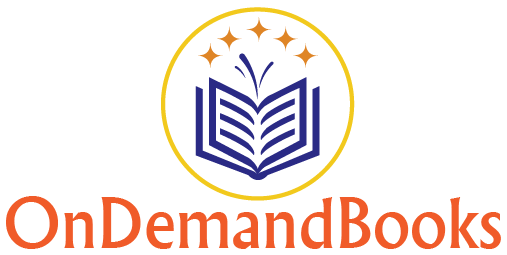We use cookies to make your experience better. To comply with the new e-Privacy directive, we need to ask for your consent to set the cookies. Learn more.
What is print-on-demand publishing?

Today we have more opportunities than ever to get our work into print, online, and distributed as e-books. And with the help of today’s technology, publishing books has never been more affordable. New categories of printing and publishing companies emerge every day with services to prepare and format manuscripts for reproduction or electronic distribution.
Yet the types of services and terminology can be very confusing—even to publishing professionals. Various skill sets and job descriptions have been consolidated. New technologies may eliminate or combine steps in the publishing process. Inexperienced self-publishers may skip or ignore tasks that seem petty, but that could have a significant effect on the quality of the finished product. All these factors combine to complicate and obscure the publishing process.
The basic definition of self-publishing is the publication of a book by the author of the work without involving an established commercial publisher, and where the author pays all expenses. Self-publishing has been around in one form or another since the beginning of publishing but in recent years, self-publishing has exploded with the emergence of print-on-demand (POD) digital printing technologies and online bookselling.
- Offset Lithography vs Print-on-demand technology
The best quality method of printing to date—whether black-and-white or color—is traditional offset lithography. This method of printing color illustrations, developed at the end of the 18th century, became the basis for high-speed printing today. Inked images are transferred (offset) from a plate to a rubberized blanket, then to the printing surface. This technology is sharp and accurate. It’s also the best way to gain cost benefits on longer print runs, and it’s the best for quality where images, photos, and full-color reproductions are concerned.
The biggest drawback to offset lithography is the expense: make-ready and setup, printing plates, inks, and wash-ups all take time and money. To receive the cost benefits (ie: profit), the minimum print run required would be between 500-1000 copies. Depending on the page count of your book, that may represent a substantial outlay of cash and inventory storage space for a book whose sales potential is unknown.
- Digital Printing with Print-on-Demand
Digital print-on-demand (POD) printing differs from offset lithography in many ways. It is not only a different technology, but also a different production model altogether. The main benefit of this method is that you can print one book at a time. Beyond a modest first-time setup charge, the unit cost for each book will be the same, whether you print 01 or 200 books. In addition, books are printed only when orders are placed, so there is no inventory to store, and there are no returns.
Usually, one of the biggest challenges for self-publishers is getting their books into distribution channels. Through most POD vendors these days, your book is automatically listed with Amazon and other online retailers, as well as being made available to traditional bookstores. POD is a good solution to reduce big cash outlays and the responsibility of maintaining inventory and overhead on a product whose sales potential is unknown. Plus, you get the added help with online listings.
- Royalty Calculators
One of the most important elements to examine on POD author sites is the royalty calculator. Authors must reasonably set a competitive cover price. The calculator then figures the POD’s share of profit and your author royalties. These POD companies make their money on layout and design and printing services—and they profit on each book sold, no matter who buys it, including you. To guarantee their profit, POD companies assign and limit the wholesale discount—which dictates your share of royalties.
In an effort to expand their services, some of the sites are adding deals where authors can upload final files for free or at lower costs. The terminology and services are changing and expanding as of this writing, and will continue to evolve along with the technology and growth in the market. The important listings to look for are: how you will submit your files and what services you need to buy to get them print-ready, whether you can choose your wholesale discount (or the POD assigns it) and what kind of marketing or distribution listings you receive in your contract.
- The important listings to look for are:
- How you will submit your files and what prepress services (design and formatting) you need to buy to get them print-ready
- Whether you can choose your wholesale discount (or the POD assigns it)
- Who owns the final files and the ISBN
- What kind of marketing or distribution listings you receive in your contract, and who else can sell your book.
If you plan your production in advance, create a detailed book budget, and research the top POD sites, you’ll have total confidence in the success of your self-published book

